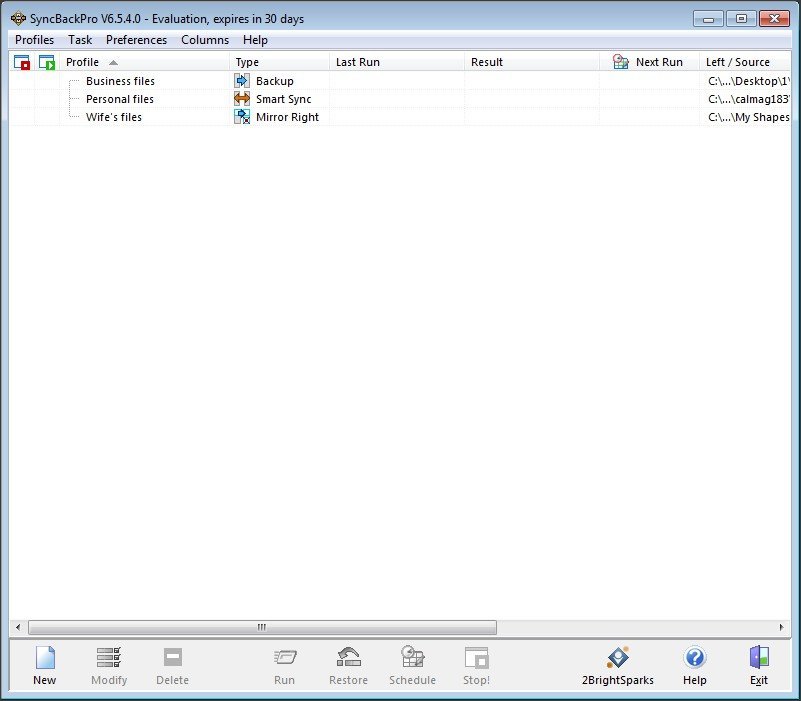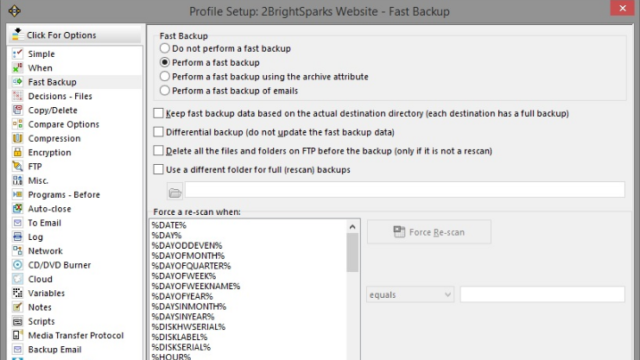

You could also schedule your backup daily, weekly or monthly using this tool. Backup simply means after the end of process you will get all the files in the source copied to the destination folder. Note that it will not delete your data inside the source folder. When the transfer is in progress, you will notice a small icon sitting on the windows taskbar.


You can pause or stop the process anytime by pressing the small icon as shown in screenshot below. Your data will be start transferring from source to destination.

You can also start the process by using the keyboard shortcut “Ctrl+R”. Now, on the Syncback window, right click on your profile name and select Run from the context menu. Here’s a detailed report of the simulated run. Simulated run will produce a detailed report on what file will be copied and deleted after you run the profile backup. It will ask your confirmation for simulated run. If you don’t want FTP server backup the option “The destination directory is on an FTP server” unchecked.Īfter filling all the settings for the profile, click on “OK” button present at the bottom right. You can also test the FTP setting by clicking on “Test FTP setting” button given at the bottom. Here you have to fill all the correct settings of your FTP server. Given below is the screenshot of the tFTP tab which appeared when I clicked on “Expert” button. By using this you can backup your data to an FTP server too. You can notice an expert button which will show you some advanced options to backup your drive. On Sub-dirs field, I selected “Include all sub-directories and their files (and use the directory filter)” because I want to backup of all the folders present inside the “test” folder. Now I selected H drive as Destination which is an external drive plugged into my PC. So I browsed through it and selected it as Source. Click on this browse button to select your source and destination folder.įor example, I want to backup a folder called “test” present in the D drive of my computer. On the right side there is a browse button (not shown in screenshot below). Here you’ll see Source and Directory field at the top. For example I gave a name “Data-Backup” to my new profile.Ī profile setup window will appear. Now there are three profile types available. When you first launch the tool, a dialogue window will appear asking you to create a new profile.


 0 kommentar(er)
0 kommentar(er)
